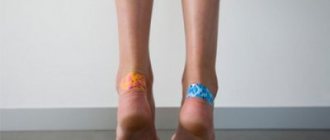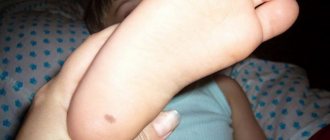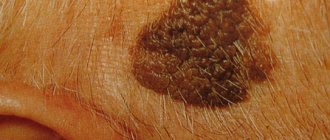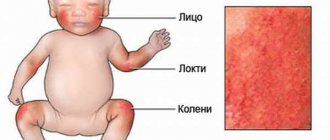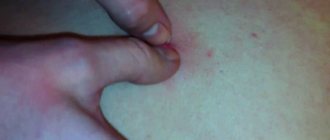Causes and risk factors
There are 2 main reasons for the development of erysipelas, or, as the disease is popularly called, erysipelas:
- Violation of the integrity of the skin. These can be wounds, scratches, cuts, microcracks, when they penetrate into the underlying tissues, a gradual development of the inflammatory process occurs.
- Weak immunity, which most often causes erysipelas.
Factors predisposing to the occurrence of pathology include:
- stress;
- physical, psychological, emotional stress and stress;
- bad habits, etc.
People at risk are most susceptible to erysipelas:
- diabetics;
- newborn children;
- HIV-infected;
- cancer patients;
- patients taking drugs based on corticosteroids or cytostatics.
In these situations, the human immune system is extremely weak, which can result not only in skin disease, erysipelas, but also in other equally dangerous and unpleasant dermatological pathologies.
Clinical manifestations
The disease has its own classification, according to which the following forms of erysipelas are distinguished:
- Erythematous , which does not differ in particular severity of symptoms and pathological changes in the skin.
- Bullous , a characteristic symptom of which is the appearance of a skin rash. It itches and contains a serous element.
- Hemorrhagic, or bullous-hemorrhagic. In this case, small blood vessels are involved in the pathological process.
- Necrotic. This form has an extremely severe course, since it is accompanied by complete necrosis of tissue in the affected area of the body.
The clinical picture depends on the location of the focus of erysipelas. But there are general signs that you need to pay attention to.
How does the disease begin?
The onset of the disease occurs 3-5 days from the moment of infection. The first symptoms of erysipelas manifest themselves through an increase in body temperature (sometimes above 38 ° C) and the occurrence of pain in the area where the source of the pathological process is localized.
In some cases, the temperature can reach 40 °C, which poses a serious danger to human health and even life. Having taken an antipyretic, the patient must call an ambulance, and there should always be someone next to him who will monitor his condition until the doctors arrive.
Along with the above symptoms, the patient begins to develop other ailments:
- severe weakness, loss of strength;
- loss or decreased appetite;
- hyperhidrosis (excessive sweating);
- photophobia;
- intolerance to loud noise.
Secondary signs of erysipelas manifest themselves through enlarged lymph nodes (lymphadenopathy) and damage to the skin.
Local manifestations
The local reaction of the body to the development of erysipelas of the skin manifests itself through the occurrence of:
- erythema, accompanied by severe redness of the skin (subsequently, the foci of the pathological process begin to itch and itch unbearably);
- swelling of the epidermis;
- the appearance of blistering rashes.
Also, with erysipelas of the skin, pain is observed, which intensifies when touching the areas affected by the pathological process. In addition, the disease has its own localization characteristics, so it is important to know what erysipelas looks like depending on its location.
Erysipelas - what is this disease and how to treat it?
Millions of people around the world become infected with infectious diseases every day. One of them is erysipelas, which has long been known to medicine.
Erysipelas - what is it?
Erysipelas is an acute infectious disease caused by beta-hemolytic streptococcus. It is characterized by the appearance of redness on the skin, accompanied by fever and general intoxication of the body (including headache, weakness and nausea).
There are 2 forms of erysipelas:
- Erythematous . In other words, the initial stage. The patient experiences a burning sensation, pain, and the area of inflammation becomes swollen and hot. Sometimes pinpoint hemorrhages occur.
- Bullous . Characterized by the presence of blisters containing clear liquid. After a few days they dry out, forming a crust on the skin.
In both forms, inflammation is accompanied by damage to the lymphatic system.
Important! Primary erysipelas most often appears on the face, while relapses of the disease “favor” the lower limbs of a person. The duration of the disease is 5 - 8 days. Residual manifestations of erysipelas can remain for life if you do not seek the help of cosmetologists.
Features of the structure of the skin on the legs, arms and face
The skin is the largest human organ, consisting of three layers. It weighs approximately 15% of the total body weight. She has various structural features on her legs, arms and face. For example, the skin on the soles of the feet has a high concentration of sweat pores. This is where its layers are thickest.
The skin on the palms lacks hair follicles and sebaceous glands. The inner side of the hands is distinguished by great elasticity, thinness and softness. On the face, or more precisely on the eyelids, there is the thinnest layer of skin on the entire human body. In the area of the eyelids, ears, forehead and nose, the skin does not have a lower layer. Facial skin is the most susceptible to aging.
Causes of the disease
Erysipelas - is it contagious to others? The cause of the disease is a streptococcal infection that has entered the soft tissue. Its source is streptococcus carrier. Most often, the “entrance door” for microorganisms into the human body is minor injuries, abrasions, cuts in the skin or mucous membranes.
Who is at risk?
According to statistics, people over 18 years of age most often suffer from erysipelas. Moreover, in 65% of cases, doctors diagnose erysipelas in people over 50 years of age. Often, men and women whose work involves microtrauma and skin contamination become infected. Erysipelas can also be caused by neglect of personal hygiene.
Symptoms of erysipelas
There are 7 main symptoms of erysipelas:
- Development of fever (convulsions, delirium).
- Manifestation of symptoms of intoxication (including headache, chills).
- Burning and itching occurs in limited areas of the skin . Painful sensations appear when interacting with this area. Over time, the skin becomes redder. After a few days, swelling occurs and the pain intensifies.
- Insomnia.
- Fever.
- Nausea and vomiting.
- Muscle weakness.
Erysipelas in a child - the first signs
Erysipelas in children almost always occurs in the spring and autumn. The initial phase in children passes faster and more acutely than in adults. However, the first signs and symptoms of the disease are the same. The only distinctive feature is heartburn, which is experienced by 99% of children infected with the infection.
Important! Girls get sick twice as often as boys.
Diagnostic measures
Diagnosis of erysipelas is based on clinical symptoms and laboratory test results that indicate the presence of a bacterial infection. After this, the dermatologist draws up a treatment plan.
Treatment
How to treat erysipelas? There are several methods for treating erysipelas. All of them are divided into 3 types:
- Drug treatment . It has been scientifically proven that hemolytic streptococci, which provoke the disease, are highly sensitive to nitrofurans, penicillin antibiotics and sulfonamides. This means that medications that contain: penicillins, erythromycin, oleandomycin, clindamycin will be useful in the fight against the disease. They can be taken either orally or by injection. Treatment lasts 5-7 days. After 1-3 days from the moment it began, the temperature returns to normal, the inflamed areas gradually turn pale. After 10 days, the antibacterial agent Biseptol is prescribed. For topical use, that is, directly for use on affected areas of the skin, the doctor prescribes erythromycin ointment and powder in the form of crushed tablets, which contain enteroseptol. Drug treatment is often supplemented with biostimulants and vitamins.
- Physiotherapy . In this case, we are talking about ultraviolet irradiation, which has a bacteriostatic effect on active bacteria. It is often prescribed to patients with erythematous erysipelas. Ultrahigh-frequency and laser therapy are sometimes used to treat relapses of the disease. But short-term freezing of the surface layers of the skin with a jet of chlorethyl until whitening, in combination with antibacterial therapy, is practiced in cases where the disease is particularly acute.
- Surgery . It is worth noting that the need for this method of treatment arises when the patient has a bullous form of erysipelas or purulent-necrotic complications arise. During the operation, the bullae are opened and the pathological fluid is evacuated. Only antiseptic agents are used locally.
Prevention
First of all, it is necessary to monitor the cleanliness of the skin, treat various wounds and cracks, and promptly treat pustular diseases. And also, during medical procedures, observe asepsis and use only sterile instruments. Then the risk that a person will experience erysipelas is minimized.
Consequences of erysipelas
In addition to the typical residual effects of erysipelas, which include skin peeling and pigmentation, a more severe consequence can be lymphedema, that is, the accumulation of protein-rich fluid in the interstitial space. In this case, surgical intervention in combination with physical anti-edematous therapy is necessary.
Skin restoration after illness
Both cosmetology and independent fight against the consequences of the disease can help restore the skin after erysipelas. Before using any medications, it is better to consult a specialist.
We recommend reading: red (orange) worms in canned saury - are they dangerous for humans?
Rozex for the face (cream and ointment): description, instructions for use, price, analogues, reviews. See information here.
Delagil ointment (Chloroquine): parazity-gribok.ru/parasites/farma/delagil.html
Treatment of erysipelas at home - folk recipes
To combat the disease at home, they often use:
- Pork fat . Apply it to the affected skin 2 times a day.
- Kalanchoe juice . It is preserved with alcohol to a strength of no more than 20%, then a napkin is dipped in it and in a five percent novocaine solution, after which it is applied to the inflamed area.
- Plantain. The plant is crushed and mixed with honey. After this, boil and apply a bandage with cooled ointment to the skin, changing it every 4 hours.
Important! Some of the remedies that people have been trying to treat erysipelas at home for several centuries not only do not contribute to recovery, but can also cause even greater harm to human health. These include, for example, injecting the affected area of skin with mercury salts.
: erysipelas in adults - causes and treatment.
You may also like
Source: https://parazity-gribok.ru/fungus/skin/rozha.html
How is pathology transmitted?
Erysipelas is a disease that is very contagious and dangerous. The fact is that the pathogen that causes the development of erysipelas, group A beta-hemolytic streptococcus, in this case can affect not only the skin, but also the mucous membranes of various organs, which is accompanied by severe pain and the inability to eat and drink normally.
But the worst thing is that the disease can easily be transmitted from a sick person to a healthy one, so no one can consider themselves protected from it.
How is erysipelas of the skin transmitted? There are 2 ways of transmitting pathology: household contact and airborne droplets. Therefore, the disease can be contracted by:
- using the patient’s personal belongings (towels, clothes, slippers);
- handshake, hug;
- kissing (if the pathological process has spread to the mucous membranes of the mouth);
- using someone else's cosmetics (when erysipelas are located on the face);
- using shared cutlery.
When the first symptoms occur, you should consult a doctor, since erysipelas, which has been ignored for a long time, can have extremely serious consequences.
Treatment of erysipelas at home
If you seek help in time, a quick cure for erysipelas is possible. It can be done at home, and only severe cases require hospitalization. The treatment method is prescribed by the doctor - he determines the necessary medications and means of recovery. How to treat erysipelas on the leg? Since this is an infectious disease, it all starts with taking antibiotics. Next is prescribed:
The cause of infection is bacteria that can spread with certain pathogenic factors in the skin and can destroy the tissue. There are two forms, which are caused by different microorganisms. The etiological significance of transient streptococcal flora prevails over resident staphylococcal flora. Complications such as systemic spread are, in principle, rare. In the advanced widespread type, mild fever and swelling of the lymph nodes may also occur in the affected region.
Streptococcal skin infections do not cause rheumatic fever. In case of infection with nephritogenic strains, hemorrhagic glomerulonephritis can occur epidemically. The duration of the disease ranges from several days to several weeks, in the case of basic lesions it can take several months.
- drugs to eliminate symptoms of the disease;
- physical therapy;
- use of lotions, compresses;
- use of ointments, creams;
- baths;
- powders;
- treatment with folk remedies.
Medication
In case of erysipelas, it is necessary to start treatment on time. All doctor's instructions must be followed. In advanced cases, non-healing trophic ulcers may appear. To treat the infection, antibiotics are used, which are taken in the form of tablets and injections. Great importance is attached to the fight against symptoms, so the following drugs are prescribed:
Hygiene measures are at the top of the procedure: avoiding scratching the affected areas of the skin, regular hand washing and regular hot washing of clothes and towels attached to the body prevent infection and prevent further contamination. In order to reduce the likelihood of scratching and therefore further spread, it is necessary to cut off the nails of the person concerned. Covering and preventing scratches promotes spontaneous healing of the disease.
Small isolated lesions are treated with local measures such as cleaning the crusts with saline or betaisodal solution until a pink sore appears. For extended lesions, treatment consists mainly of eliminating short-term streptococcal pyogenes flora through systemic antimicrobial treatment. The basic principle of any antibacterial therapy is the following: the choice of antibiotic is as narrow as possible - as wide as necessary.
- Claritin, which relieves itching;
- "Nurofen", which lowers temperature and reduces inflammation;
- “Hypothiazide”, which removes excess fluid and relieves intoxication;
- “Prodigiozan”, which supports immunity;
- vitamin complexes.
Antibiotics
If the disease is mild, a weekly course of antibiotic tablets is prescribed. These may be drugs: Azithromycin, Erythromycin, Sparamycin. Antibiotics are selected so that they act on streptococcus, which causes erysipelas. If the chosen drug does not work, try another one ten days later. For better effects, intravenous antibiotics are prescribed. In severe cases, in hospital conditions, Benzylpenicillin is used. Treatment takes place strictly under the supervision of a doctor.
The correct choice of systemic antimicrobial therapy is based on clinical appearance. The small arc form uses oral penicillin, and the oral cephalosporin of the cephalexin group is indicated in the form of a large bubble. Macrolides largely cover the spectrum of pathogens and are also effective against β-lactamase-forming staphylococci, taking into account the problem of resistance of streptococci and staphylococci. Yosamycin is particularly suitable for staphylococci and streptococci due to the much more favorable resistance situation.
Ecthyma is associated with impatigo contagiosum, but necrosis of the bladder base and significant inflammatory reactions occur around the lesion. Ecthymia occurs primarily under poor hygienic conditions, but also with limited body defenses, such as leukemia and under antineoplastic treatment. Rapid destruction of tissue with large, deep lesions is called egthymic gangrenosis. This can result in severe, disfiguring ulcerations of the mouth, genitals, or hearing and external auditory canal within a few days.
Ointment for skin inflammation
When treating erysipelas of the skin in the early stages, ointments are not used. They are used for the cystic form of the disease. In this case, “Ichthyol ointment” is effective, which acts as an antiseptic and promotes disinfection. "Vishnevsky Ointment" helps in the treatment of old infections. At the recovery stage, the use of Naftalan ointment gives excellent results.
Therefore, in severe cases, microbiological diagnosis and resistance testing are necessary. Pathogens rarely attack the deeper layers of the skin and cause a nail, nail fungus or abscess. Treatment of ecthyma depends on the same therapeutic considerations. Oral penicillin or an oral cephalosporin of the cephalexin group is used. Use of macrolides after isolation and resistance, Yosamycin can be given empirically due to its significant activity against staphylococci and streptococci.
Public institutions, such as kindergartens or schools, can be visited by the patient only after the infected skin has healed. be. Rye is a bacterial infection of the upper layers of hay and the lymphatics and appears as a pronounced, severe redness. Belts are caused by small breaks in the skin and are found mainly in the face, arms or legs and less commonly near the navel. In childhood, chronic eczema of the ear canal, nasal opening or microtrauma can also be an entrance. In elderly patients, a predisposing factor is the diabetic metabolic system and concomitant circulatory disorders.
Folk remedies
When treating erysipelas of the leg using folk remedies, consultation with the attending physician is required - independence leads to complications. Grated potatoes laid in a thick layer are used as a compress. It is recommended to use fresh burdock or cabbage leaves, you should:
Streptococci spread rapidly in the lymph glands or along the lymph nodes of the dermis due to their ability to form hyaluronidase. Very rarely, other pathogens may be responsible for the formation of erysipelas. The entry point for pathogens is often an epithelial defect—a wound, a rigade, or an athlete's foot. For example, a nail becomes deformed on an athlete's foot, which usually results in minor trauma to the nail bed and thus an entry point for bacteria. Patients with edema are more at risk of developing erysipelas, especially those with pre-existing lymphatic vessel damage.
- rinse them;
- beat until the juice releases;
- tie to a sore spot.
The healing properties are attributed to the effect of a red rag - it is recommended to bandage it after applying a compress. It is advised to try a powder of ground chalk - leave it overnight. Treatment with vegetable oil helps, which should be boiled in a water bath for 5 hours. They lubricate the wound with it and sprinkle it with crushed “Streptocide”. The compress is left overnight.
Diagnostic features
Diagnosis of erysipelas begins with a physical examination and dermatoscopy, a procedure performed using a special medical device (dermatoscope). Thanks to such manipulations, the doctor can make a preliminary diagnosis, but to confirm it, clinical tests must be performed:
- The erythrocyte sedimentation rate, which at the initial stage is 20 mm/hour. But the longer the disease progresses, the higher these indicators will be (30-40 mm/hour).
- Determination of leukocyte level. In a severe form of erysipelas, the level of leukocytes in the blood can drop to 4 * 10 to the 9th power per liter of blood (despite the fact that the normal indicator in this case is 10.1 * 10 to the 9th power / liter).
- Red blood cell level. With the hemorrhagic form of erysipelas, there is a significant decrease in the number of red blood cells; with other types of pathology, their concentration remains within normal limits.
- Hemoglobin. With the hemorrhagic form of erysipelas, the hemoglobin level drops to 75 g/l. In some cases, indicators may drop to lower numbers.
Instrumental diagnostic methods are prescribed by a doctor if complications of the pathology occur or the patient has concomitant heart or vascular diseases.
What is erysipelas on the leg
Erysipelas is an infectious skin disease that has clear boundaries and a bright red color at the site of the lesion. The causative agent is the bacterium streptococcus. It exists in the environment. If you receive a leg injury, just a scratch, or are bitten by an insect, streptococcus enters the body through the damaged skin and becomes infected. When your immune system is weakened, erysipelas will develop very quickly. People who work outdoors often get sick: construction workers, agricultural workers. According to the international classifier ICD-10, erysipelas has the number A46.
What does a mug look like?
In tissue, especially subcutaneous tissue, streptococci can spread over a large area and cause both local and general signs of inflammation. This usually painful cellulitis or erysipelas can significantly affect the general condition caused by fatigue, high fever and chills.
Treatment of erysipelas on the leg with drug therapy
The risk is that the bacteria spread over very wide areas of the skin and put a lot of strain on the person's body, which is bothered by its toxins and has a strong defense response. Extreme swelling of the arm or leg affected by the wound may result from inflammation of the lymph nodes.
Streptococcus can remain in the body after illness, for example, chronic streptococcal tonsillitis or caries. If you have a strong immune system, you can live with bacteria for many years without getting sick. Erysipelas can begin after stress or a sudden change in temperature. The provocateur of the inflammatory process is tanning or hypothermia. The following diseases provoke erysipelas:
As an additional complication, the blood vessels in the erysipelas area can become inflamed. In particular, with erysipelas in the head area, such inflammation of the veins under certain circumstances can lead to dangerous complications of the cerebral nerves and the brain itself.
Finally, it is possible that pathogens spread in the blood throughout the body and result in life-threatening or life-threatening illness. Therefore, early treatment is very important. However, such complications are not very common and can usually be avoided with proper therapy. If protection is good, erysipelas can develop without treatment.
- foot fungus;
- thrombophlebitis;
- diabetes;
- phlebeurysm;
- obesity;
- lymphatic drainage disorders;
- allergy.
Symptoms of the disease
Erysipelas of the leg begins suddenly. At the initial stage, the temperature rises sharply, weakness and muscle pain appear. Redness and swelling occur on the skin. The lesion quickly increases in size. In severe forms, confusion and convulsions appear. The patient loses consciousness and may faint. The course of the disease is characterized by:
To distinguish erysipelas from allergies, certain substances are tested in the blood to detect inflammation. Additionally, the white blood cell count, another sign of wound infection, usually increases significantly. If necessary, antibodies against streptococci in the blood can also be detected. There is also the possibility of directly diagnosing the pathogen with a wound swab.
Medicines such as acetylsalicylic acid and ibuprofen are suitable for pain control and fever control. They also act as anti-inflammatory agents. But these agents also sometimes cause unwanted damage to the skin, blood, kidneys, stomach and other organs. In case of a large wound, the doctor advises to undergo hospital treatment, because the medicine can be prescribed as infusions through a vein.
- feeling of heat, fullness;
- enlarged lymph nodes;
- soreness, itching;
- nausea;
- intestinal problems;
- burning sensation.
Causes of the disease
There are many reasons for the onset of erysipelas. A special role is played by skin disorders resulting from injuries to the limbs and insect bites. A small abrasion and microcracks are enough for the streptococcus bacteria that causes the disease to enter. One of the reasons is the professional factor. The disease occurs in people who work in chemical plants. The provoking effect is long walking in rubber shoes. At the same time, mechanics, miners, and people working in metallurgy get sick.
What precautions are there?
Existing underlying diseases that favor erysipelas should be treated optimally and regularly monitored by a physician.
Medical publishing and information services. M.: Department of Surgery. Rye should not be confused with pinkish-yellow, a skin infection with erysipelas. In the oral cavity, bright, shiny, raised, compacted, pressure-like lamellar lesions with sharp demarcations are clinically characteristic. There is also a bullous form of erysipelas. Erysipelas is usually caused by group A β-hemolytic streptococci and is most common on the legs and face. The causes of erysipelas can be:
- purulent and viral infections - the infection enters through opened blisters;
- allergic skin diseases - bacteria penetrate through scratching areas;
- metabolic disorders;
- decreased immunity;
- oncology;
- diseases of internal organs;
- taking medications that reduce immune defense;
- ENT diseases;
- stress;
- elderly age of the patient;
- impaired blood flow in the lower extremities;
- drinking alcohol, smoking.
Diagnostic methods
Diagnosis of erysipelas of the leg begins with interviewing the patient. It is determined how the disease began, how long it lasts, and what the symptoms are. Next, the diseased limb is examined for compliance with the signs of the disease. If they are not clearly expressed, a blood test is done to determine the presence of infection. If necessary, consult with a dermatologist and infectious disease specialist. In a controversial situation, a histological examination of infected tissue is carried out.
Traditional medicine recipes
The facial spine must be separated from the herpes zoster, angioedema and contact cavity.
This is often accompanied by high fever, chills and malaise. Diagnosis is made based on typical appearance and blood cultures are used in septic patients. Diffuse inflammatory carcinoma of the breast may also be confused with erysipelas. Dicloxacillin 500 mg p.o. 4 times a day can be used for 10 days for staph infections. Erythromycin 500 mg p.o. 4 times a day for 10 days can be used in patients with penicillin allergy; however, streptococci increase resistance to macrolides. For infections that are resistant to these antibiotics, cloxacillin or cephalexin can be used.
Is erysipelas contagious?
Erysipelas is contagious and can be transmitted through contact with sick people. If a person close to you has such a diagnosis and care is required for him, it is necessary to take precautions. Use gloves to carry out procedures. After communicating, be sure to wash your hands with soap. Provide the patient with separate dishes and linen.
In Europe, pristinamycin and roxithromycin have been shown to be good choices for erysipelas. Cooling compresses and analgesics lead to local relief. Fungal foot infections can be a gateway to infection, so antifungal treatment is often necessary to prevent recurrences. Implantation contagiosum is primarily a vesicular, superficial infection of the skin. At the same time, there is a significant increase in resident flora on damaged, inflammatory skin.
The disease is contagious, transmission occurs through infection by a mask and occurs in small epidemics under poor hygienic conditions. The infection begins with superficial thin-walled vesicles with an inflammatory halo, which quickly blurs, dries and turns into honey-yellow crusts. Affections include the face, limbs and genitals. The spread is caused by peripheral spread and autoxidation. The incubation period ranges from two to ten days, possibly even longer. The disease is contagious until all open, purulent spots heal.
Effective therapies
How to treat erysipelas of the skin? If the form of the disease is mild, a conservative therapeutic approach is used.
To cure the disease according to the classical scheme, the patient is prescribed:
- Antibiotics. In this case, it is advisable to use antimicrobial drugs from a number of penicillins (Amoxiclav) or sulfonamides (Sulfalen, Sulfadiazine). Sometimes Ceftriaxone, a drug from a series of cephalosporins, is used to treat erysipelas.
- Antiallergic medications aimed at eliminating and preventing the development of an allergic reaction that can be caused by the vital activity of streptococci: Suprastin, Tavegil, Eridez, etc.
- Painkillers and non-steroidal anti-inflammatory drugs: Nimesulide, Diclofenac, Meloxicam, etc.
- Antiseptic solutions for lotions or compresses on the site of inflammation. In this situation, the drug Chlorhexidine (0.005%) is used. They need to moisten a sterile bandage or gauze and apply it to the diseased areas. Secure with a bandage and leave for 2-3 hours. Compresses should be changed regularly.
The treatment course lasts from 10 to 14 days - it all depends on the severity of the disease and the extent of the pathological process.
Treatment of bullous erysipelas is usually carried out in a hospital. The same applies to situations where the pathology is severe. In case of necrotic erysipelas, surgical removal of dead tissue is performed.
Affected areas
Erysipelas of the leg: symptoms and treatment. On the legs, erysipelas often manifests itself as a consequence of the development of fungal infections or calluses. In this case, the “gates” for the penetration of streptococcus bacteria are microcracks and microdamages, and the lymphatic vessels of the legs become the site of infection propagation.
The development of erysipelas of the legs is also facilitated by the presence of diseases that cause poor circulation in the legs: obliterating atherosclerosis, thrombophlebitis, varicose veins. Erysipelas on the leg is the most common form of infection.
Treatment of erysipelas of the leg is similar to other forms of the disease. Many medical websites are full of pictures of erysipelas on the leg, photos of the initial stage, but you should not diagnose this disease yourself. Erysipelas of the leg, symptoms and treatment are determined by an experienced infectious disease doctor who prescribes a treatment regimen in a particular case.
Erysipelas on the hands
Erysipelas of the hand also manifests itself as a result of disruption of blood flow and stagnation of lymphatic fluid.
The reason for this may be the intravenous administration of narcotic drugs. The injection site in this case becomes the “gateway of infection.” Erysipelas of the arm is also common in women who have had breast surgery. In this case, erysipelas of the hand is caused by the outflow of lymph.
Erysipelas on the face
The places where erysipelas affects the face are the human mucous membranes - eyes, ears, nose.
If a streptococcal infection affects the mucous membrane of the eye, the disease manifests itself in the form of conjunctivitis, as well as inflammation of the skin around the eye sockets. If the bacterium enters the auricle against the background of weakened immunity and the development of otitis, then the lesions become both the auricle and the scalp and neck. The disease erysipelas on the face usually occurs in a severe form, is difficult to treat and is accompanied by pain and swelling.
Erysipelas on the trunk
When streptococcus bacteria infect the skin of the body, the “gateway of infection” is the unhealed areas of the body around surgical sutures.
In frequent cases, such damage occurs due to non-compliance with hygienic standards for caring for sutures.
Possible complications
If the disease is not treated for a long time, parallel pathological processes begin in the body, and not only on the surface of the skin, but also internal organs suffer.
Lack of therapy can lead to:
- the formation of abscesses on the surface of diseased areas of the skin;
- phlegmon - abscesses that form in soft tissues;
- purulent phlebitis;
- necrotic form of erysipelas;
- purulent meningitis;
- blood poisoning.
Such consequences can be avoided only if you consult a doctor in a timely manner and refrain from self-medication.
How does infection occur?
Streptococcal infection can penetrate through any, even the most minimal, damage to the skin caused by:
- insect bites;
- cuts;
- bedsores and ulcers;
- wounds on the skin that remain after drug administration.
Carriers of streptococcal infection are people with a strong immune system - approximately 15% of the total population
Important. Having penetrated the body, harmful bacteria begin to multiply en masse in the lymphatic capillaries and also release harmful toxins into the blood. Erysipelas is the body's response to this intervention.
Prevention
Prevention of erysipelas on the skin involves:
- careful care of the skin and compliance with hygiene rules;
- mandatory treatment of wounds, scratches, cracks;
- complete cure of dermatological diseases of infectious and fungal nature;
- monitoring the condition of the epidermis in diabetics;
- regular replenishment of the vitamin balance in the body;
- strengthening the immune system.
And of course, you should avoid contact with a person who has suspicious inflamed areas of skin on the face, arms or legs. If it was not possible to avoid infection with group A beta-hemolytic streptococcus, it is necessary to isolate the patient from other people, since it is easy to contract the disease, and in order to cure it, you will have to spend a lot of time and effort.
There are no similar articles.
Streptococcal infection or erysipelas
The peak of infection occurs in the summer-autumn season, and relapses occur at any time of the year. Erysipelas progresses rapidly, has several clinical forms, and begins suddenly. If streptococcus reaches a person with strong immunity, he becomes a carrier of the infection. This is especially dangerous for women who are about to give birth, because the pathogen can penetrate the baby’s umbilical wound and begin to develop.
Infectious inflammation of erysipelas affects the skin on any part of the body. After recovery, acquired immunity does not occur and the person may become ill again. Inappropriate treatment of erysipelas and failure to comply with sanitary standards lead to a protracted treatment process, frequent relapses or surgery. Complications include pathologies of the lymphatic and circulatory systems, sepsis, and infectious-toxic shock.

